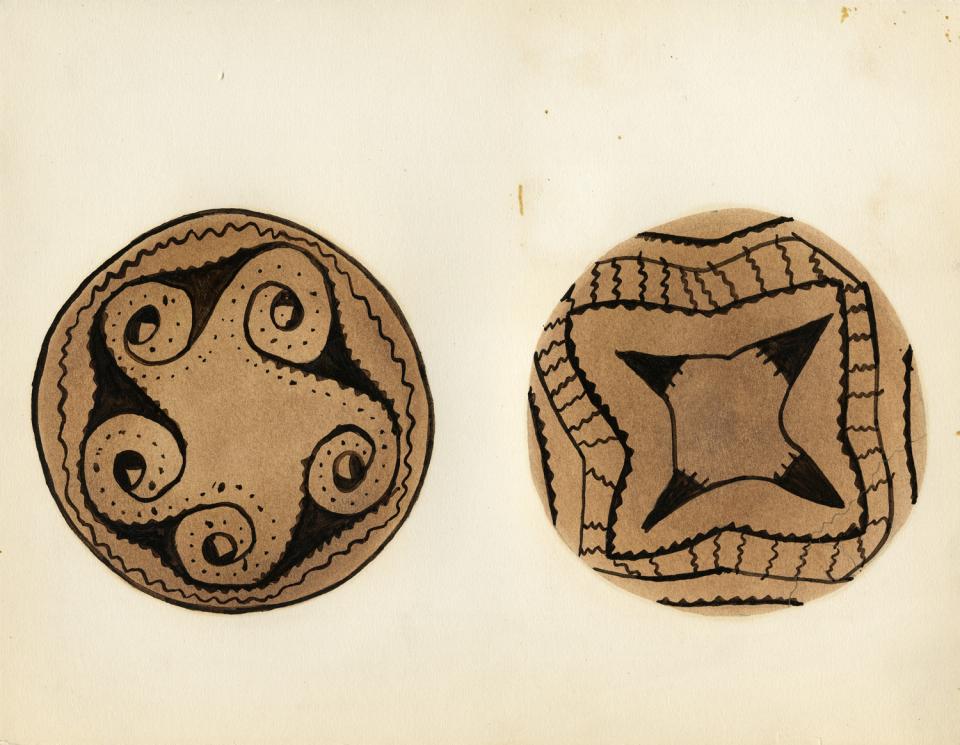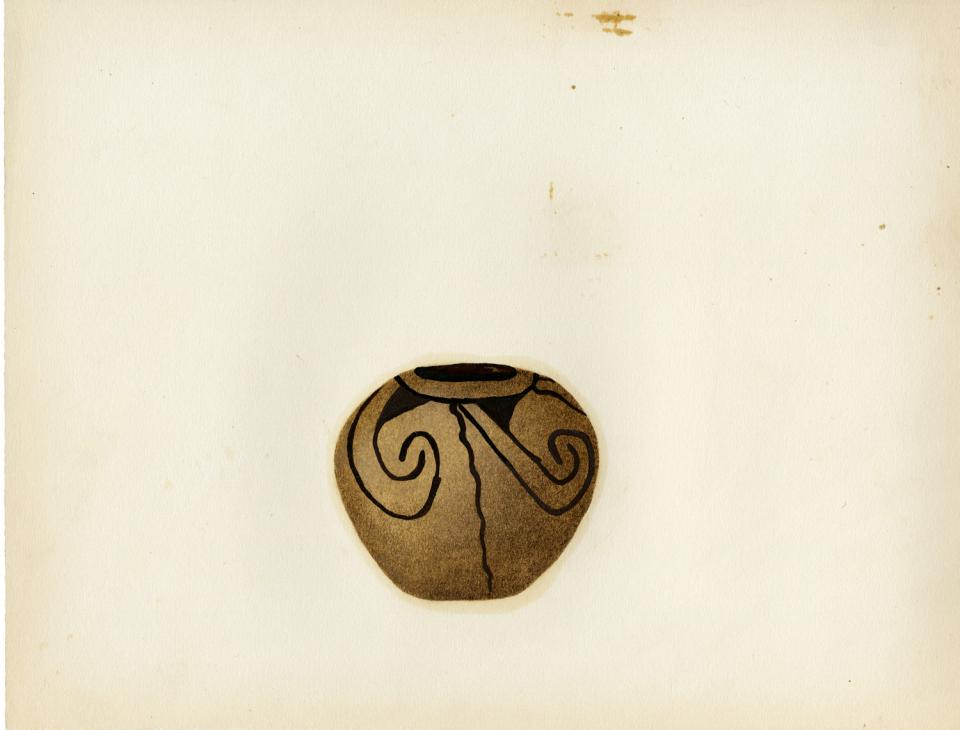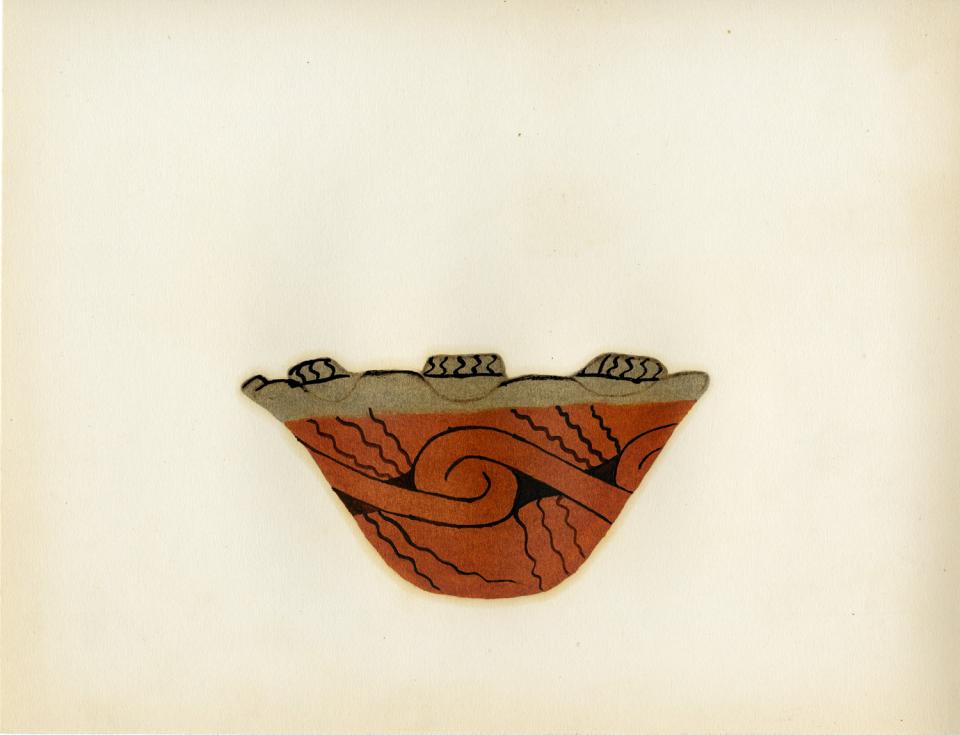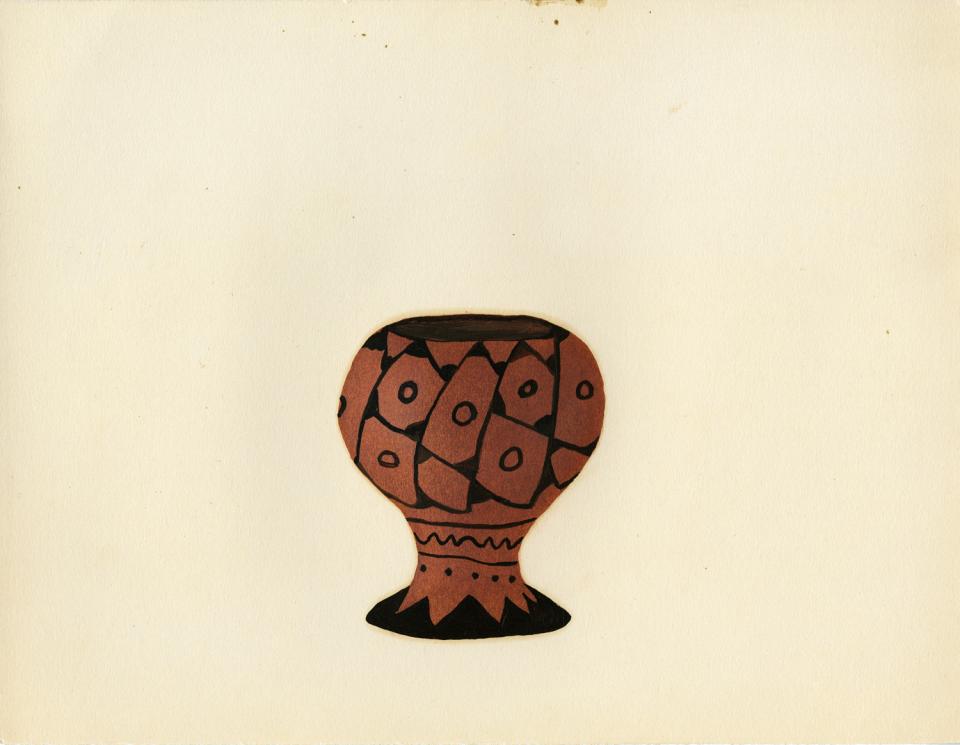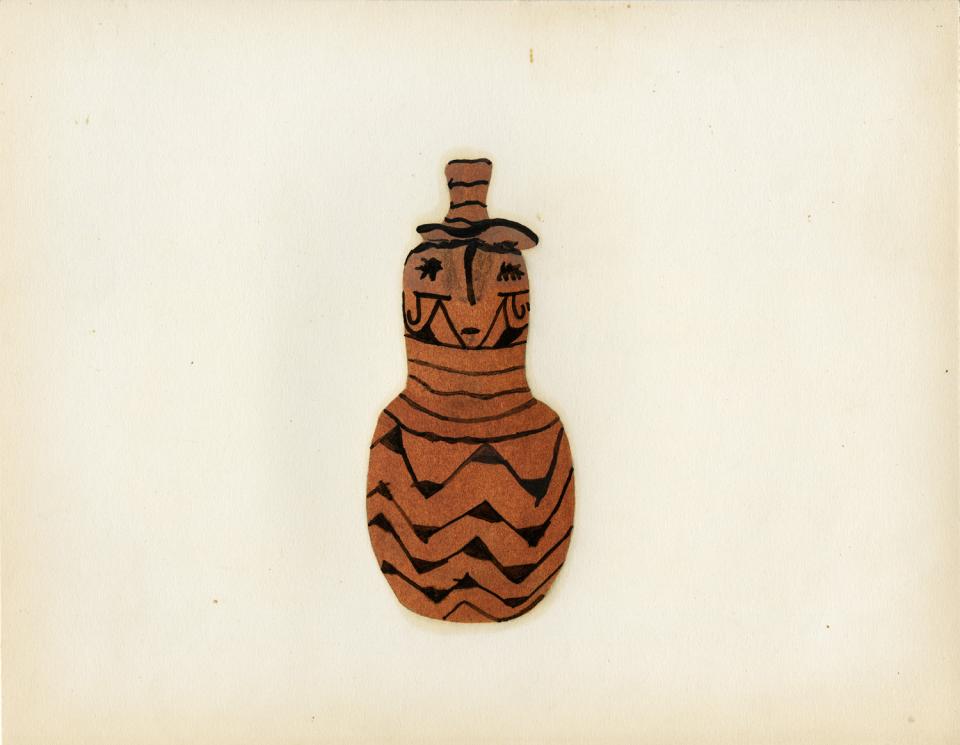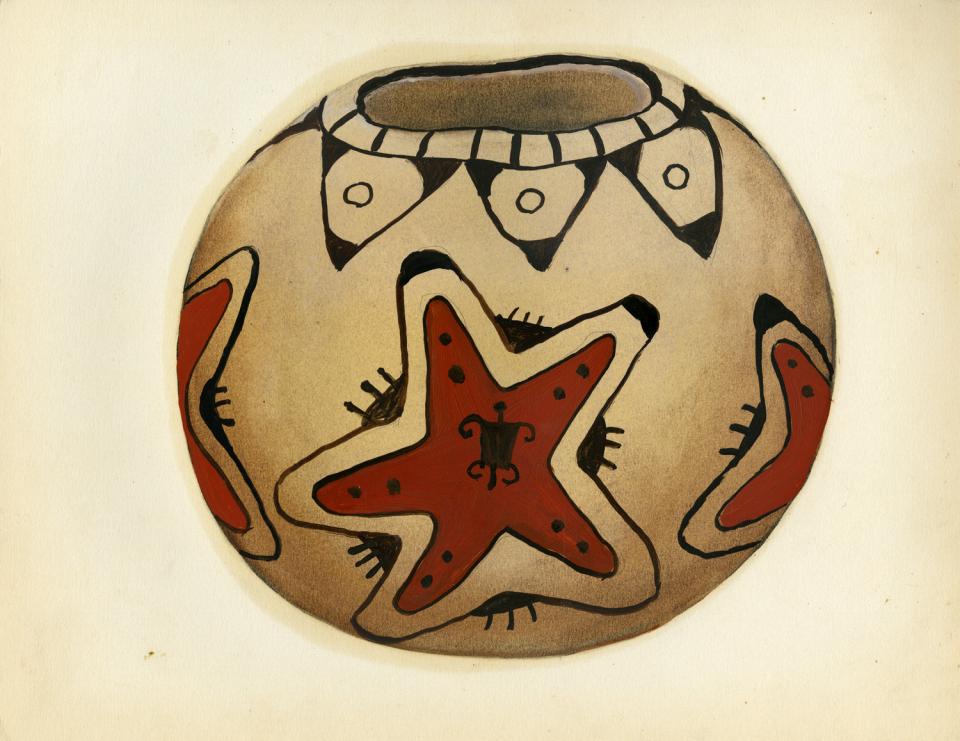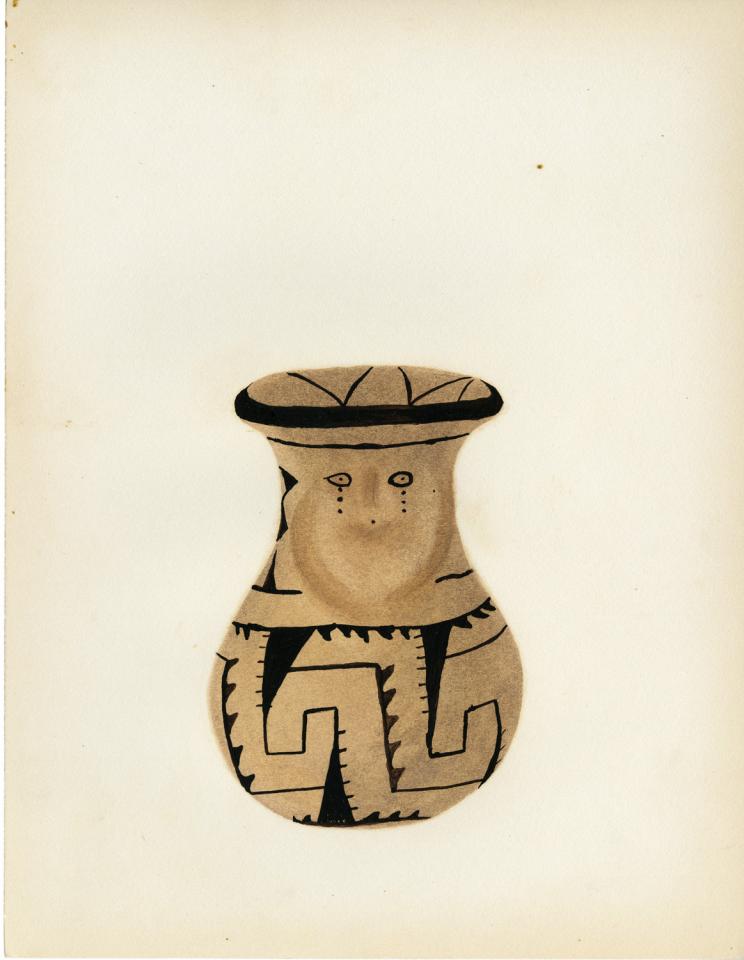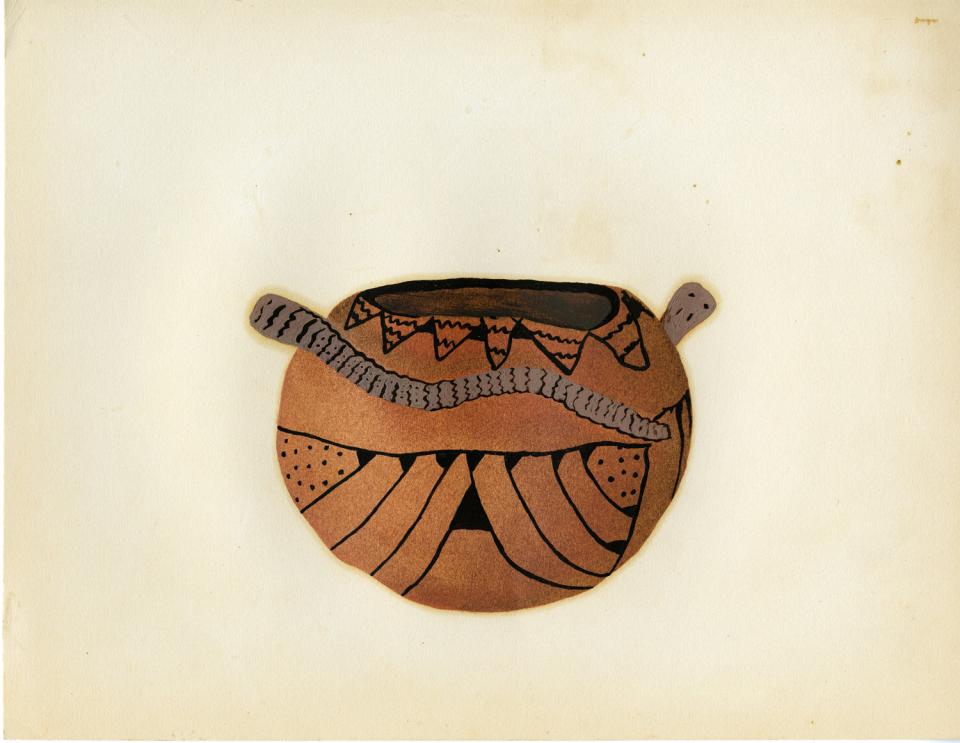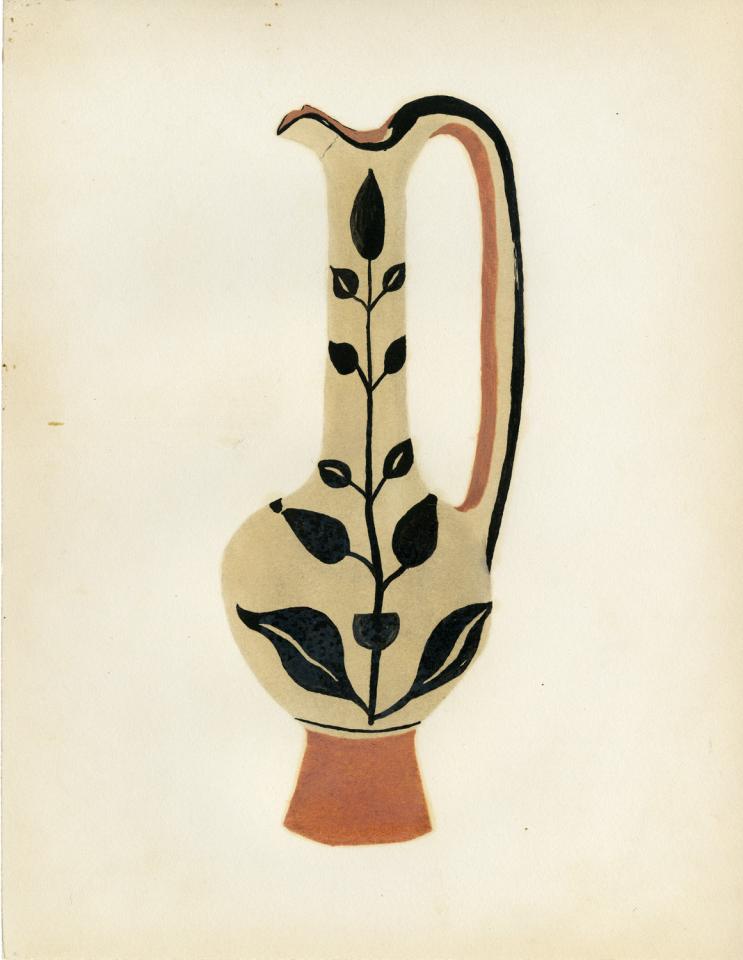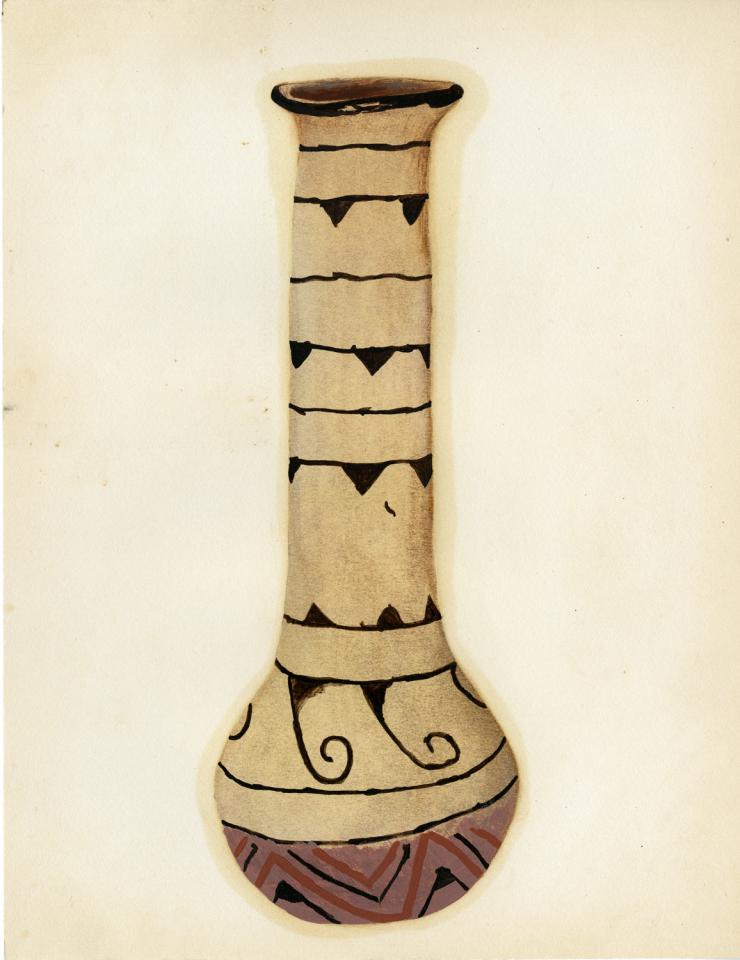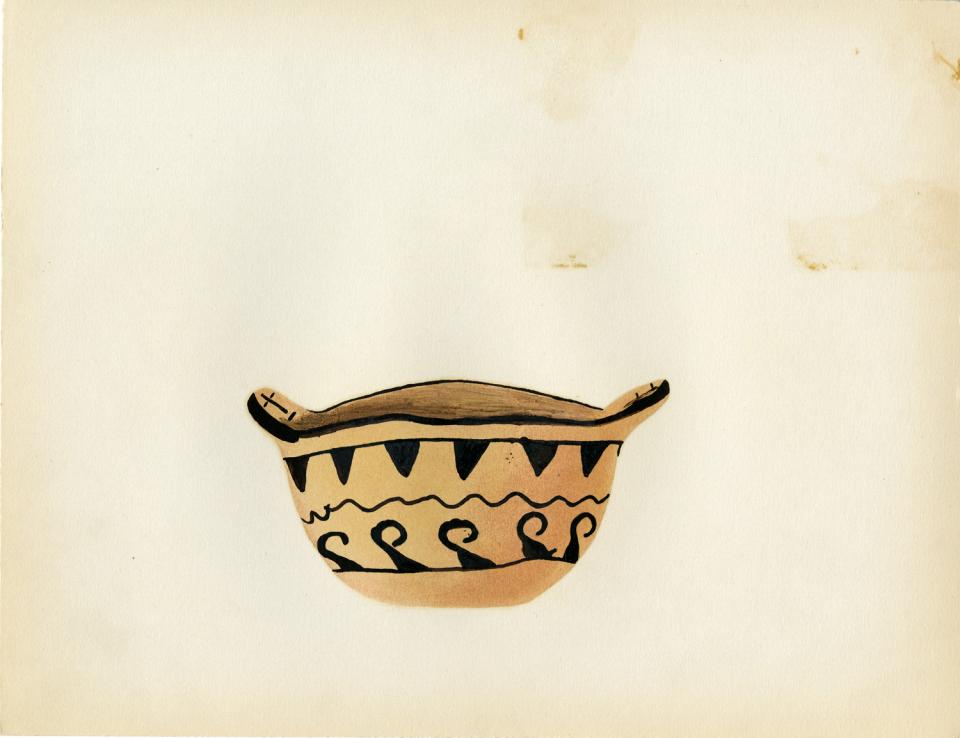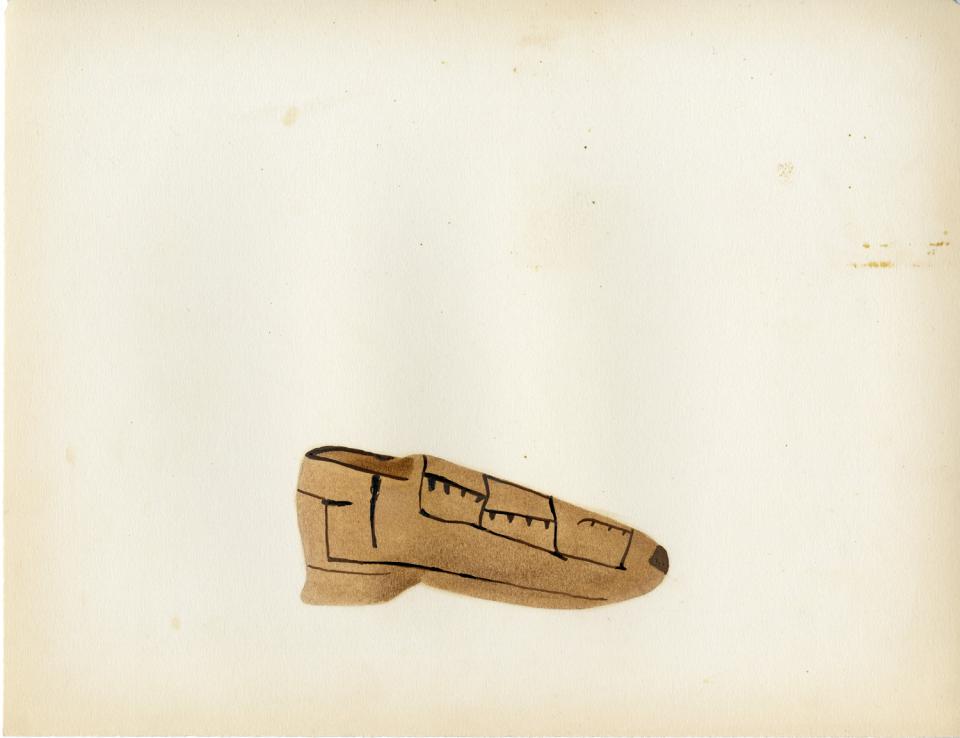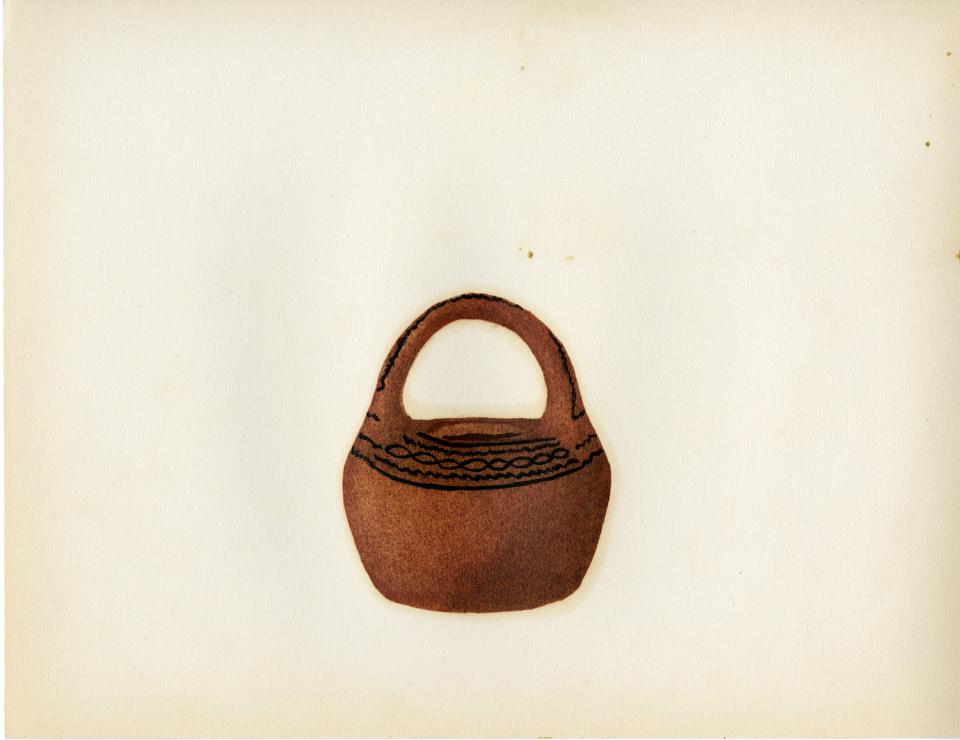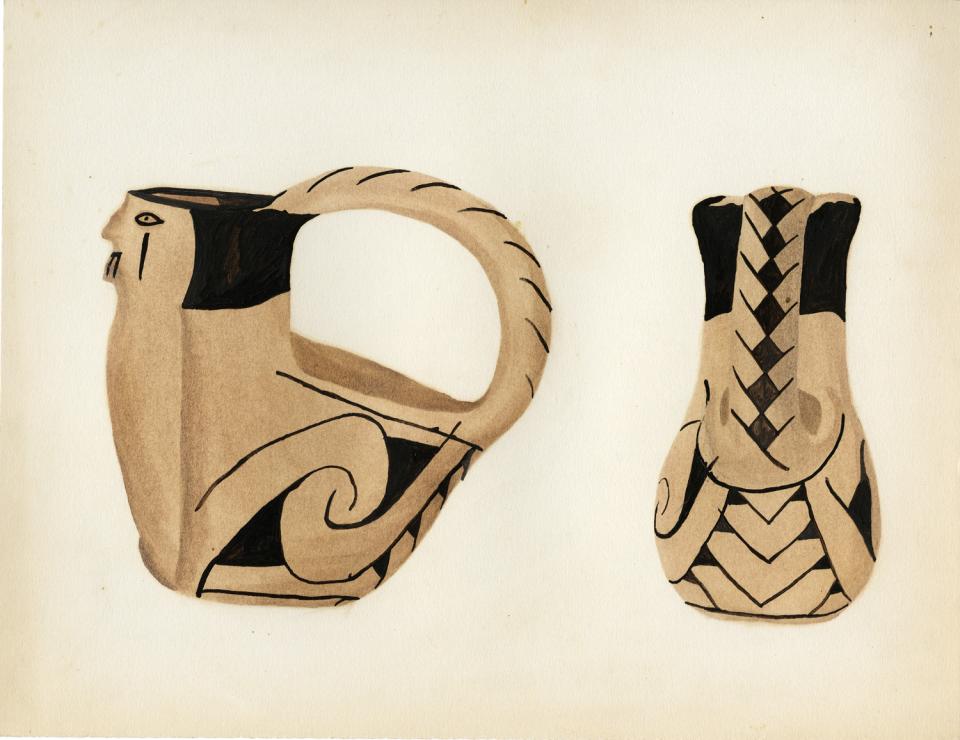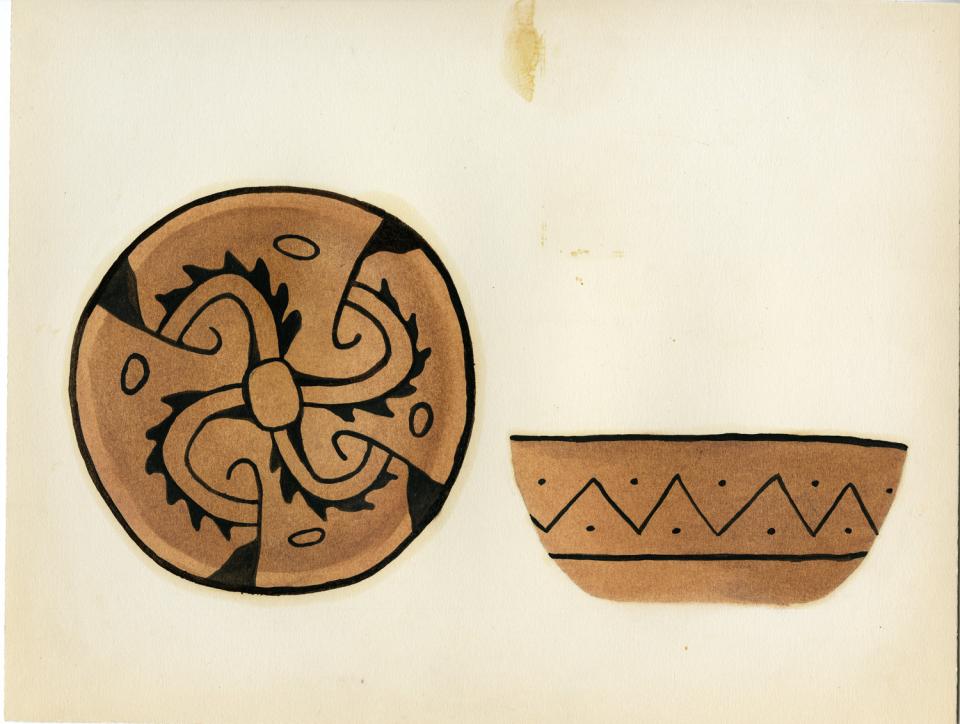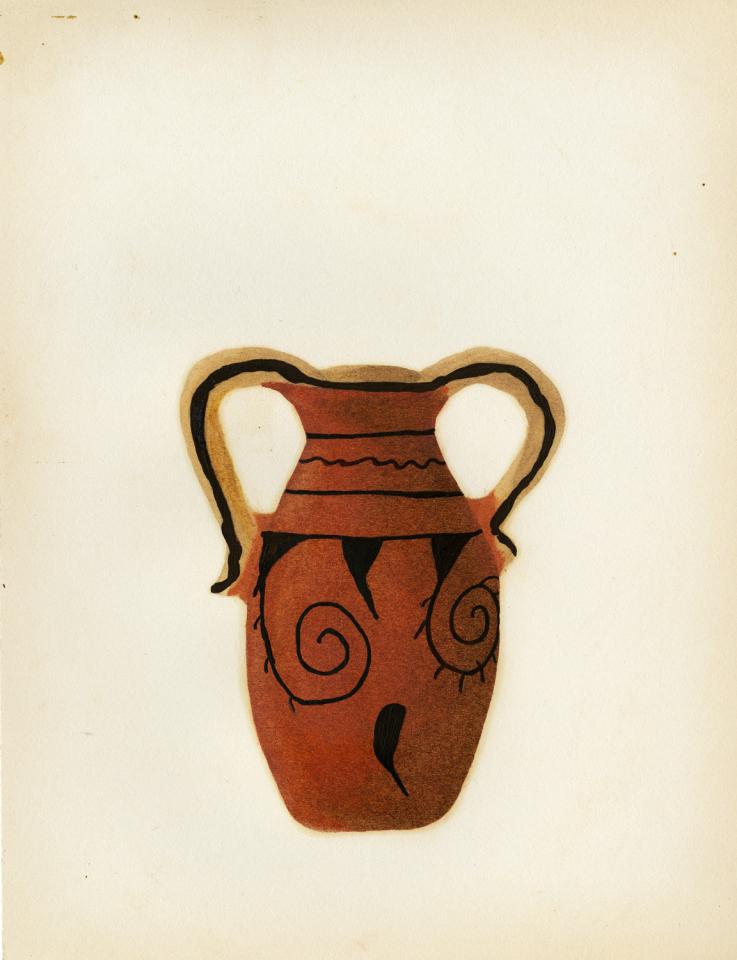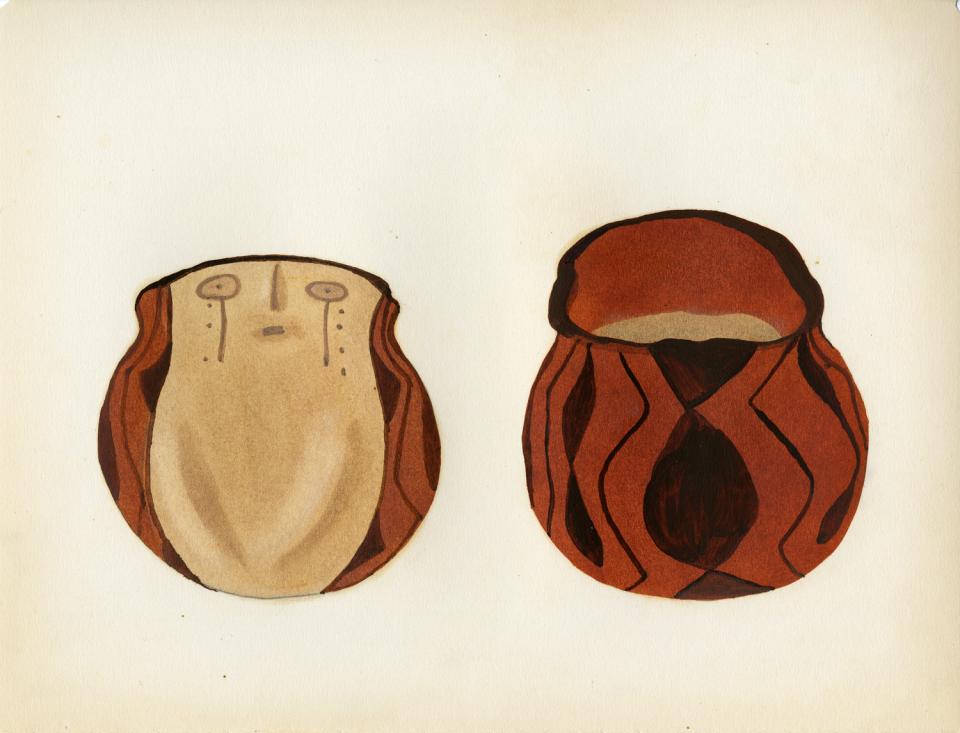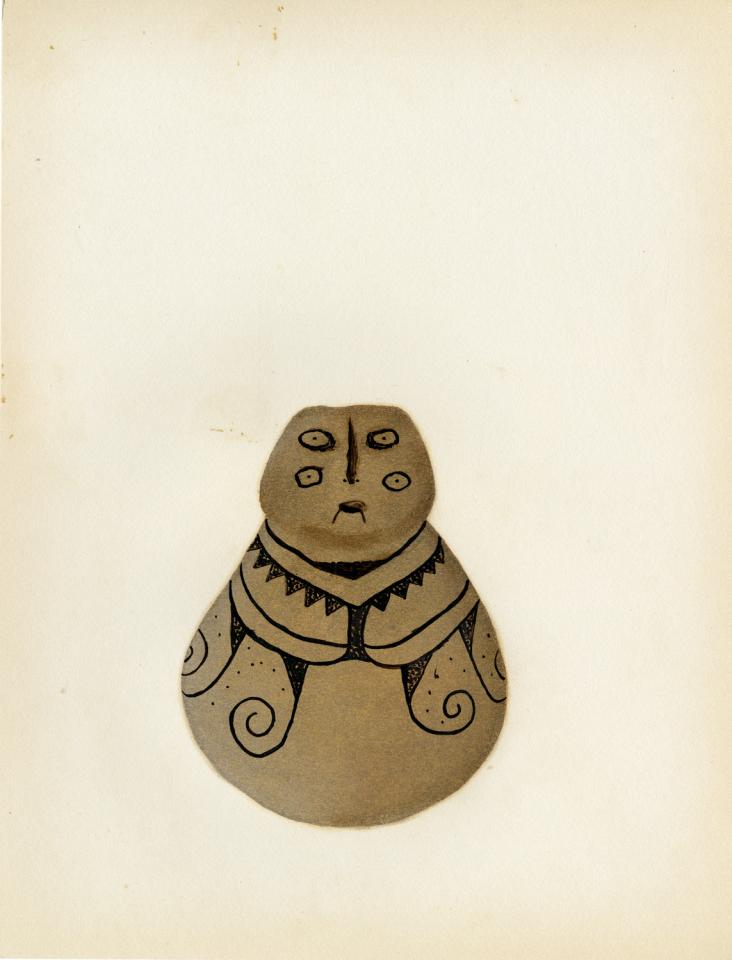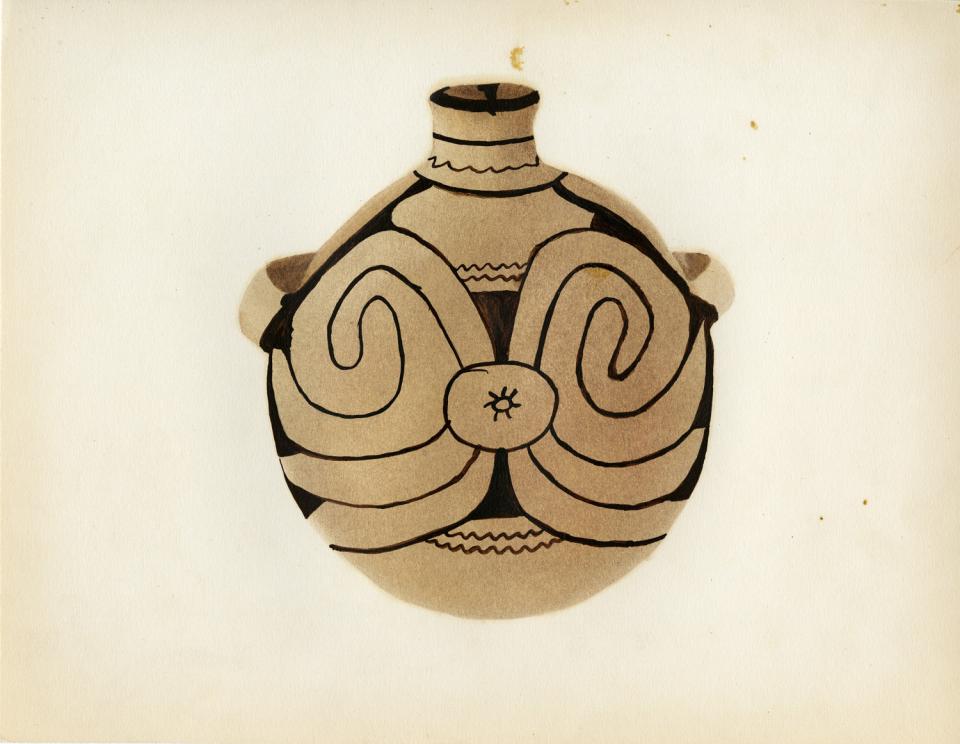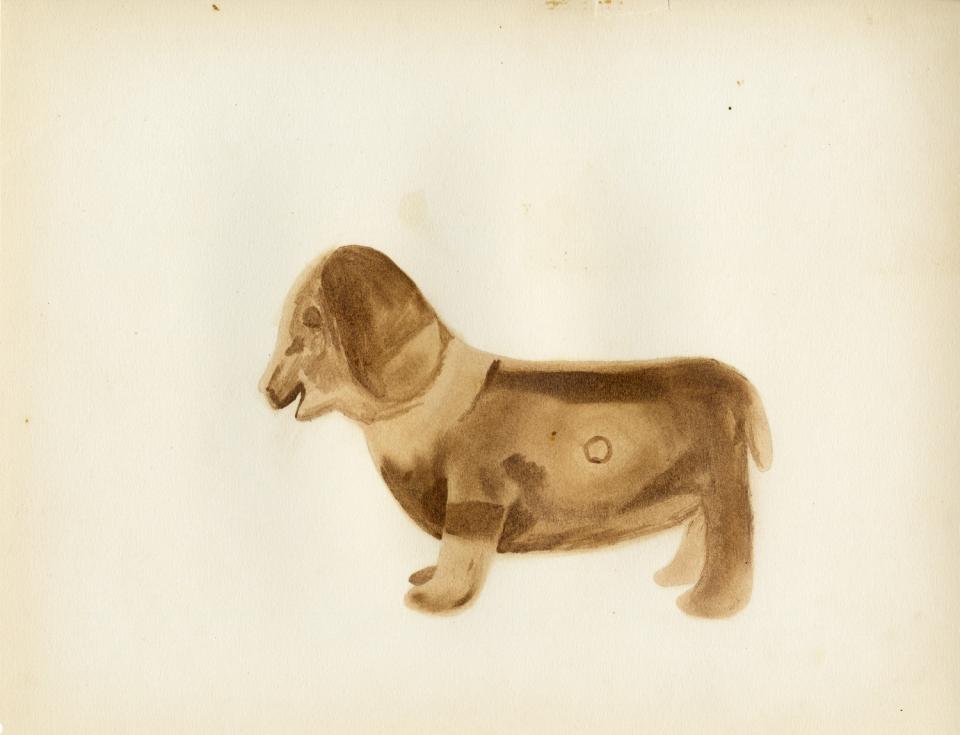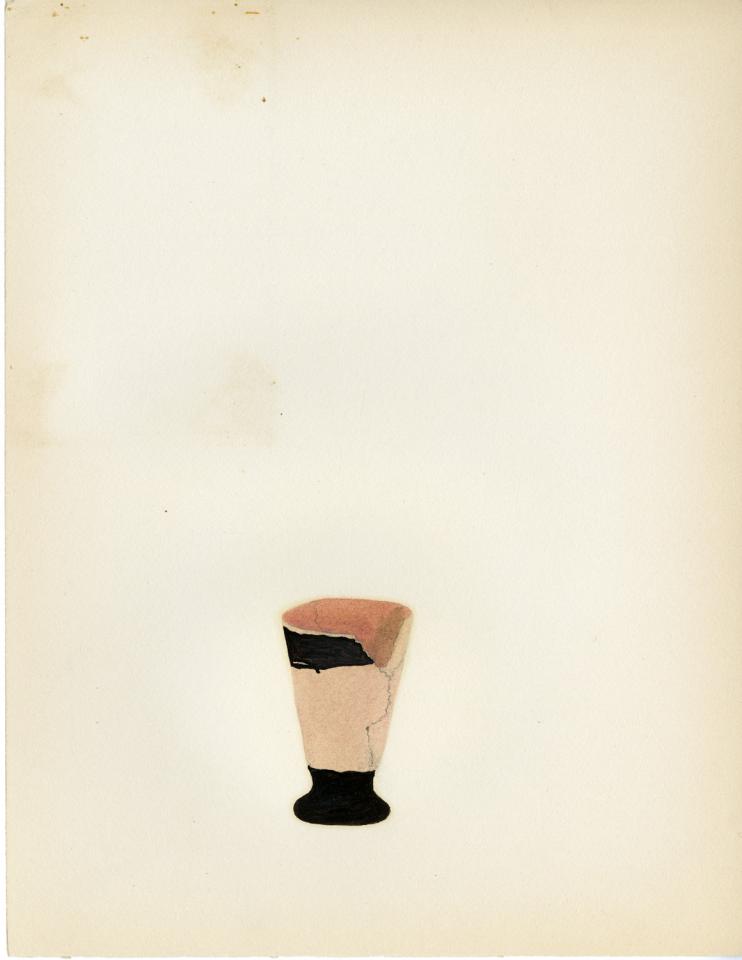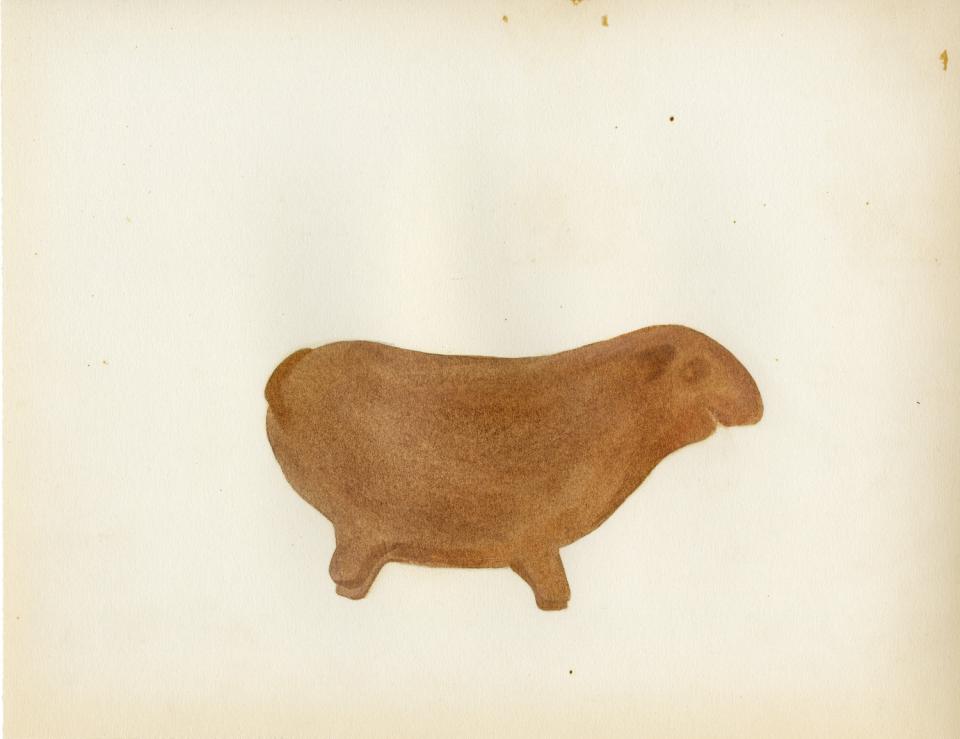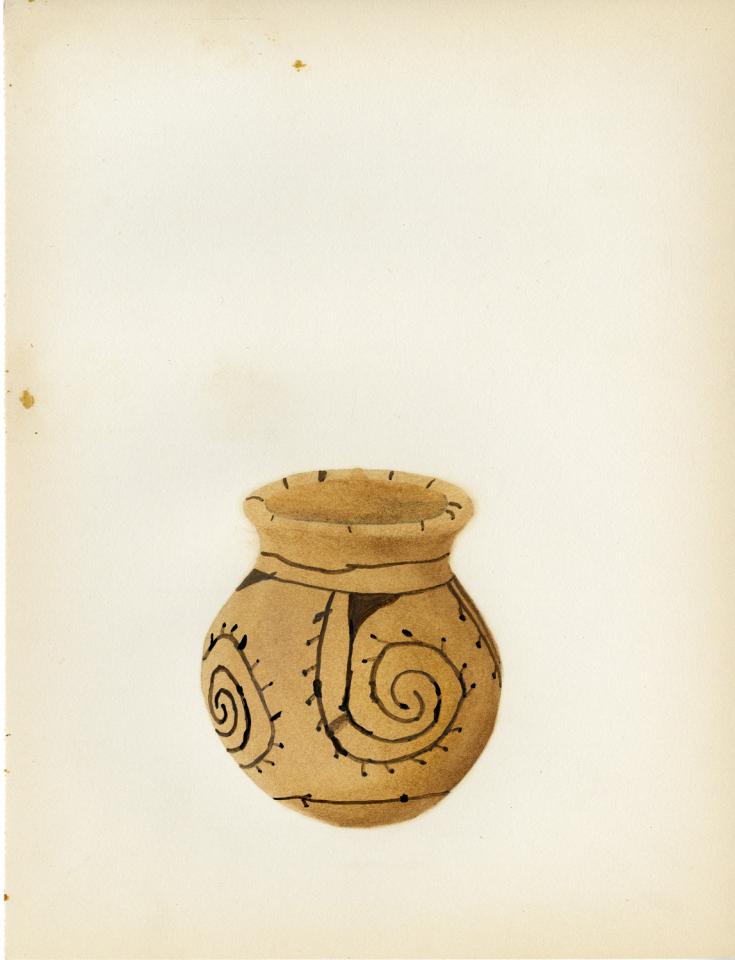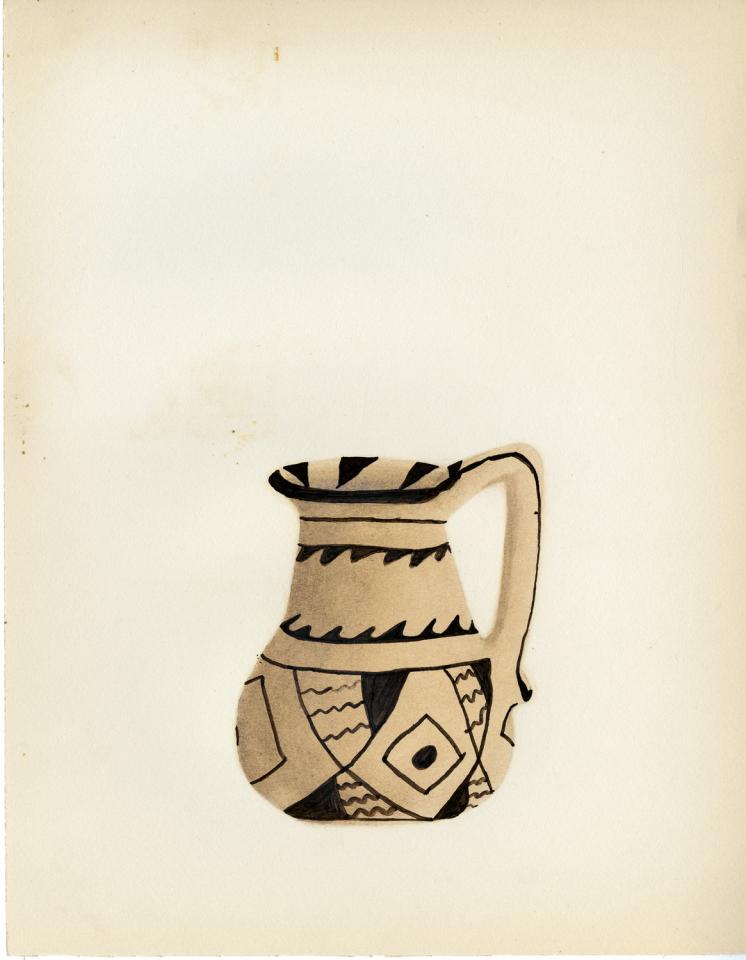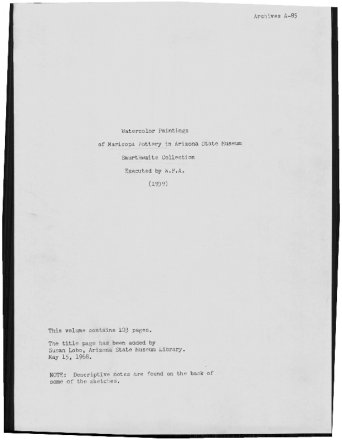Watercolor Paintings of Maricopa Pottery

Watercolor Paintings of Maricopa Pottery
These 102 watercolor paintings depict Maricopa pottery from the Arizona State Museum's Smurthwaite Collection. The watercolor paintings were completed by unknown artists employed by the Works Progress Administration in 1939. The watercolors are on lightweight matboard. The pottery showcased in the paintings was purchased by the Arizona State Museum from Caroline Smurthwaite and Burridge D. Butler in March 1938.
The collection's subject matter, Maricopa pottery, is significant in that it expresses an important cultural and artistic tradition of the Maricopa people. The Maricopa Indians, or "Xalychidom Piipaash" (People who live toward the water), is made up of five small groups of Yuman language speakers who migrated from the lower Colorado River area to the Gila and Salt Rivers. Eastward migration of the Maricopa started as early as the fifteenth century and continued occasionally until the 1800s. By 1852 they settled among the Pima, established a relationship, and became allies. Today there are two main Maricopa settlements: the Gila River Indian Community and the Salt River Pima-Maricopa Indian Community. (Click the links to see other materials from the communities.)
Each painting in the collection displays a different piece of pottery, each unique in size, style, and design. No two paintings, or pieces of pottery, are the same. Black-on-red, black-on-buff, and black-on-buff-and-red are the three most common types of pottery made by the Maricopa. Frequently used designs include the various bull's-eye patterns, triangular motifs, interlocking scrolls, and ticking lines. Pottery styles include bowls, pitchers, platters, and ollas in many shapes and sizes. Double spouted jars, effigy vessels, and long necked jars are unique to Maricopa pottery. This collection of watercolor paintings gives a comprehensive representation of Maricopa pottery from the Smurthwaite Collection.
The paintings in the collection were created during a time of great revival for Maricopa pottery. From 1937 to the early 1940s, Maricopa pottery rose in quality, production, and worth. The revival allowed the Maricopa potters to have an elevated economic status and to establish self-sufficiency. Today, Maricopa pottery has yet to see another revival. Maricopa pottery artists are not as plentiful as before; however, the craft is still a beautiful tradition and testament to the Maricopa Indian community. Additional resources to consult that deal with Maricopa and Southwestern pottery are: Dirt for Making Things: An Apprenticeship in Maricopa Pottery as told to Janet Stoeppelmann by Mary Fernald (1995); and Southwestern Pottery: Anasazi to Zuni by Allan Hayes and John Blom (1996).

